-
 Bitcoin
Bitcoin $113900
-1.39% -
 Ethereum
Ethereum $3517
-4.15% -
 XRP
XRP $3.009
1.59% -
 Tether USDt
Tether USDt $0.9997
-0.04% -
 BNB
BNB $766.8
-1.41% -
 Solana
Solana $164.6
-2.38% -
 USDC
USDC $0.9998
-0.02% -
 TRON
TRON $0.3277
0.65% -
 Dogecoin
Dogecoin $0.2023
-1.67% -
 Cardano
Cardano $0.7246
0.05% -
 Hyperliquid
Hyperliquid $38.27
-4.77% -
 Sui
Sui $3.528
-0.52% -
 Stellar
Stellar $0.3890
-0.73% -
 Chainlink
Chainlink $16.16
-2.69% -
 Bitcoin Cash
Bitcoin Cash $539.9
-4.38% -
 Hedera
Hedera $0.2425
-2.00% -
 Avalanche
Avalanche $21.71
-0.97% -
 Toncoin
Toncoin $3.662
5.73% -
 Ethena USDe
Ethena USDe $1.000
-0.02% -
 UNUS SED LEO
UNUS SED LEO $8.964
0.35% -
 Litecoin
Litecoin $107.7
2.33% -
 Shiba Inu
Shiba Inu $0.00001223
-0.40% -
 Polkadot
Polkadot $3.617
-0.97% -
 Uniswap
Uniswap $9.052
-2.49% -
 Monero
Monero $295.1
-3.79% -
 Dai
Dai $0.9999
0.00% -
 Bitget Token
Bitget Token $4.315
-1.85% -
 Pepe
Pepe $0.00001060
0.11% -
 Cronos
Cronos $0.1342
-2.72% -
 Aave
Aave $256.0
-0.87%
How to stake Polkadot (DOT) with Trezor
Stake Polkadot (DOT) securely using Trezor by connecting to platforms like Polkadot{.js} Wallet, enabling rewards while maintaining private key control.
Jul 09, 2025 at 09:42 pm
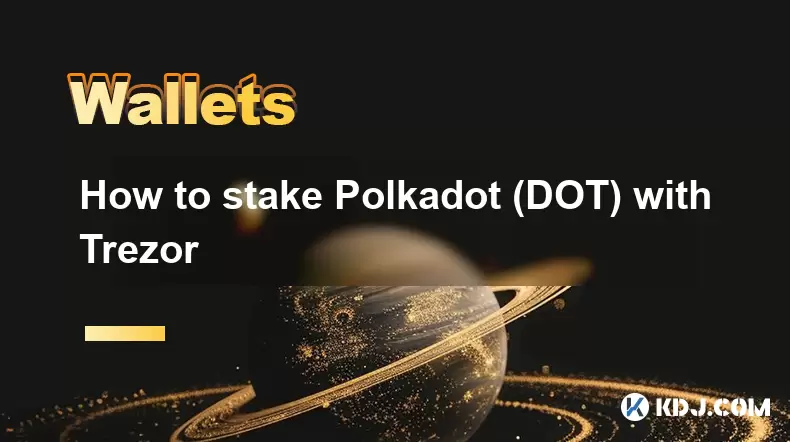
Understanding Polkadot (DOT) Staking
Staking Polkadot (DOT) allows users to participate in network validation and earn rewards. Unlike traditional proof-of-work systems, Polkadot uses a Nominated Proof-of-Stake (NPoS) consensus mechanism. This means token holders can either become validators or nominate trusted validators with their DOT tokens. By staking, users contribute to the security and efficiency of the Polkadot blockchain while earning passive income.
Before initiating the staking process, it's essential to understand that Trezor is a hardware wallet designed for secure storage of cryptocurrencies. However, Trezor does not natively support staking operations directly within its firmware. Users must interact with external platforms or wallets that support staking functionality while keeping their private keys secured on the Trezor device.
Preparing Your Trezor Wallet for DOT Staking
To begin staking DOT with Trezor, you need to ensure your Trezor firmware is updated to the latest version. Visit the official Trezor website and download the appropriate firmware update if necessary. Once updated, install the Trezor Suite application on your computer, which acts as an interface for managing supported cryptocurrencies.
Next, verify that your Trezor wallet contains DOT tokens. If not, transfer your DOT from an exchange or another wallet to your Trezor-connected address. Make sure to use the correct network protocol when sending DOT—Polkadot Mainnet—to avoid irreversible losses.
Ensure you have a backup of your Trezor recovery phrase stored securely offline. This step is crucial in case of device failure or loss.
Connecting Trezor to a Compatible Staking Platform
Since Trezor doesn't offer direct staking features, users must connect their hardware wallet to third-party interfaces that support DOT staking. One such platform is Polkadot{.js} Wallet, a browser-based wallet interface developed by the Web3 Foundation.
- Open the Polkadot{.js} extension in your browser.
- Select “Add Account” and choose “Connect Hardware Wallet.”
- Follow the prompts to connect your Trezor device via USB.
- Authorize the connection using your Trezor PIN and confirm ownership of the public key.
Once connected, your DOT balance will appear in the interface. You can now proceed to nominate validators or bond funds for validator candidacy.
Selecting and Nominating Validators
Choosing the right validators is a critical step in staking DOT. Validators are responsible for producing blocks and maintaining network integrity. As a nominator, you delegate your DOT stake to one or more validators, sharing in the rewards they earn.
- Navigate to the “Staking” tab in the Polkadot{.js} interface.
- Click on “Account Actions” and select “Nominate.”
- Choose at least 16 validators with strong performance metrics and low commission rates.
- Confirm the transaction through your Trezor device by reviewing the details and signing the nomination request.
It’s important to monitor validator performance regularly and adjust nominations if certain validators underperform or act maliciously. Remember, poor validator choices can lead to slashing penalties if they engage in harmful behavior.
Managing Staked Funds and Claiming Rewards
After successfully nominating validators, your DOT tokens are bonded and actively participating in the network. Rewards are distributed approximately every 24 hours, known as an era in the Polkadot ecosystem. However, these rewards are not automatically claimable; you must manually claim them through the Polkadot{.js} interface.
- Go to the “Staking” section again.
- Look for the “Payout” button under your staking account.
- Initiate the payout process and sign the transaction using your Trezor wallet.
Keep in mind that unbonding DOT takes 28 days, during which your funds remain locked. Therefore, plan your liquidity needs accordingly before staking large amounts.
Frequently Asked Questions
Can I stake DOT directly from the Trezor app?
No, Trezor does not support direct staking functions within its native application. You must use external staking platforms like Polkadot{.js} Wallet while connecting your Trezor hardware wallet for secure transactions.
Is it safe to connect my Trezor to third-party wallets for staking?
Yes, as long as you use official and reputable platforms like Polkadot{.js} Wallet, and always verify transaction details on your Trezor screen before signing. Never share your recovery phrase or enter it into any online service.
What happens if a validator I nominated gets slashed?
If a validator behaves maliciously or fails to perform duties, both their stake and the stake of their nominators (including yours) may be partially slashed. It’s recommended to spread nominations across multiple validators to reduce risk.
Do I need to keep my Trezor plugged in while staking?
No, once you’ve signed the staking transaction, your Trezor device does not need to stay connected. The staking process runs on the Polkadot blockchain, and your Trezor remains offline and secure until you initiate another transaction.
Disclaimer:info@kdj.com
The information provided is not trading advice. kdj.com does not assume any responsibility for any investments made based on the information provided in this article. Cryptocurrencies are highly volatile and it is highly recommended that you invest with caution after thorough research!
If you believe that the content used on this website infringes your copyright, please contact us immediately (info@kdj.com) and we will delete it promptly.
- Crypto Donations, Trump PAC, and Bitcoin: A New York Minute on Political Coin
- 2025-08-02 20:30:12
- Crypto Market Under Pressure: Bearish Momentum and Rising Volatility Take Hold
- 2025-08-02 20:30:12
- DeFi Token Summer Gains: Is Mutuum Finance the Real Deal?
- 2025-08-02 18:30:12
- Bitcoin, Realized Price, and the Top: Are We There Yet?
- 2025-08-02 18:30:12
- Dogwifhat (WIF) Rally: Will the Meme Coin Bite Back?
- 2025-08-02 19:10:12
- PayFi Heats Up: Tron's AMA Recap & TRX's Bullish Nasdaq Debut
- 2025-08-02 19:10:12
Related knowledge

What is a watch-only wallet in Trust Wallet?
Aug 02,2025 at 03:36am
Understanding the Concept of a Watch-Only WalletA watch-only wallet in Trust Wallet allows users to monitor a cryptocurrency address without having ac...

How to switch between networks in Trust Wallet?
Aug 02,2025 at 12:36pm
Understanding Network Switching in Trust WalletSwitching between networks in Trust Wallet allows users to manage assets across different blockchains s...
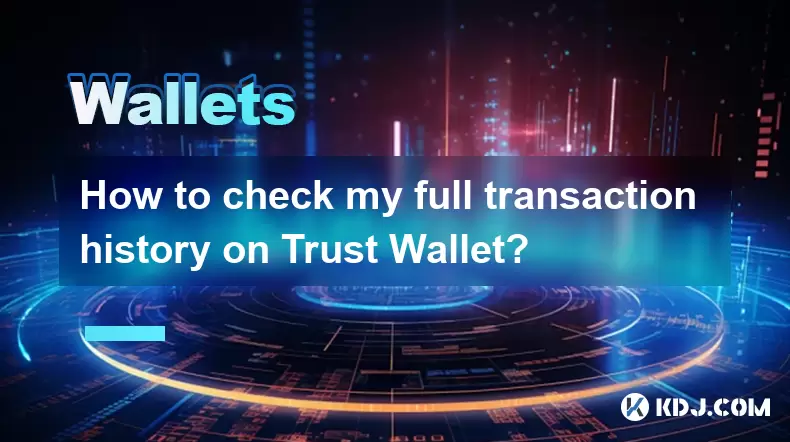
How to check my full transaction history on Trust Wallet?
Aug 02,2025 at 09:24am
Understanding Transaction History in Trust WalletTrust Wallet is a widely used non-custodial cryptocurrency wallet that supports a broad range of bloc...
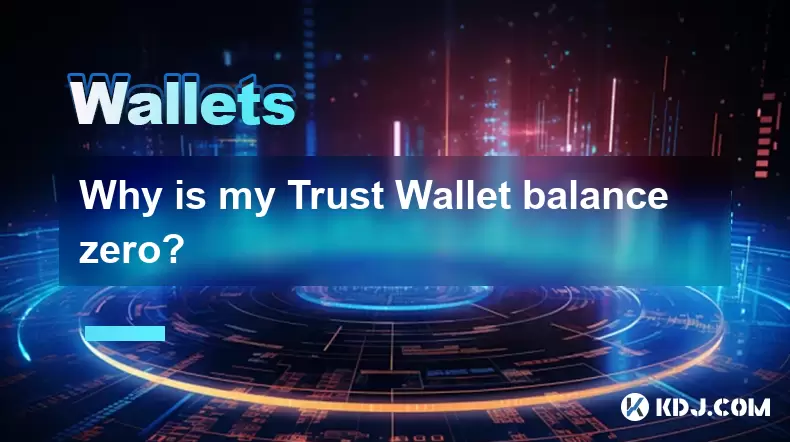
Why is my Trust Wallet balance zero?
Aug 02,2025 at 03:49am
Understanding Trust Wallet Balance Display IssuesIf you're seeing a zero balance in your Trust Wallet despite knowing you've previously received or se...
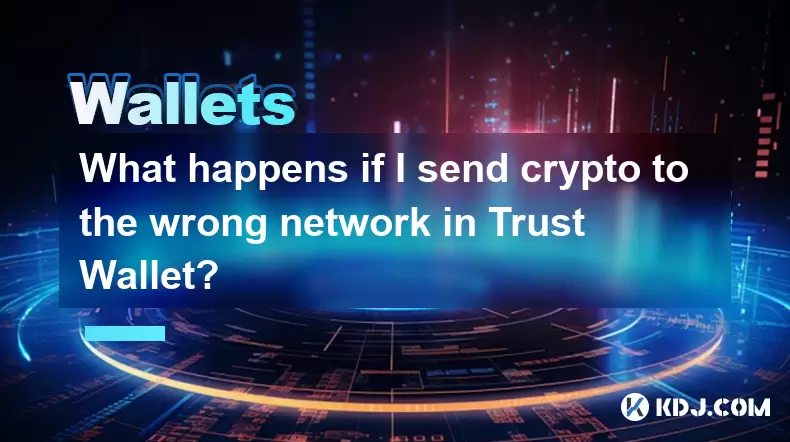
What happens if I send crypto to the wrong network in Trust Wallet?
Aug 02,2025 at 07:22pm
Understanding Network Compatibility in Trust WalletWhen using Trust Wallet, it's essential to understand that different cryptocurrencies operate on di...
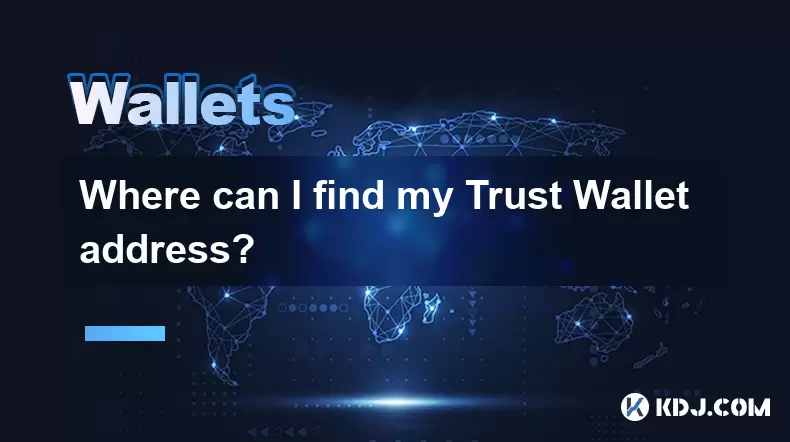
Where can I find my Trust Wallet address?
Aug 02,2025 at 06:07pm
Understanding Your Trust Wallet AddressYour Trust Wallet address is a unique identifier that allows others to send you cryptocurrency. It is a string ...

What is a watch-only wallet in Trust Wallet?
Aug 02,2025 at 03:36am
Understanding the Concept of a Watch-Only WalletA watch-only wallet in Trust Wallet allows users to monitor a cryptocurrency address without having ac...

How to switch between networks in Trust Wallet?
Aug 02,2025 at 12:36pm
Understanding Network Switching in Trust WalletSwitching between networks in Trust Wallet allows users to manage assets across different blockchains s...

How to check my full transaction history on Trust Wallet?
Aug 02,2025 at 09:24am
Understanding Transaction History in Trust WalletTrust Wallet is a widely used non-custodial cryptocurrency wallet that supports a broad range of bloc...

Why is my Trust Wallet balance zero?
Aug 02,2025 at 03:49am
Understanding Trust Wallet Balance Display IssuesIf you're seeing a zero balance in your Trust Wallet despite knowing you've previously received or se...

What happens if I send crypto to the wrong network in Trust Wallet?
Aug 02,2025 at 07:22pm
Understanding Network Compatibility in Trust WalletWhen using Trust Wallet, it's essential to understand that different cryptocurrencies operate on di...

Where can I find my Trust Wallet address?
Aug 02,2025 at 06:07pm
Understanding Your Trust Wallet AddressYour Trust Wallet address is a unique identifier that allows others to send you cryptocurrency. It is a string ...
See all articles

























































































